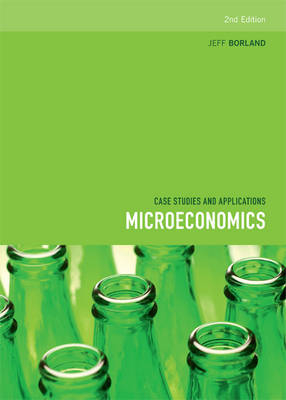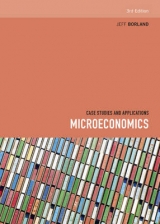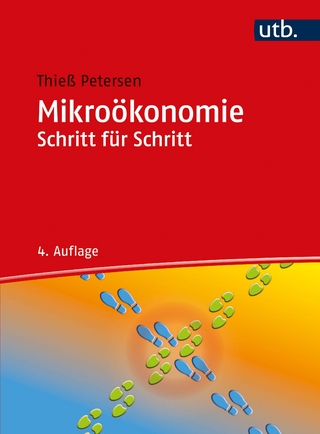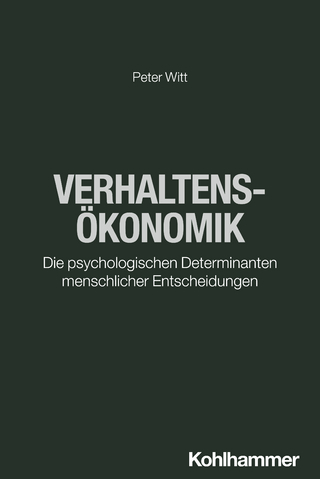
Microeconomics
Cengage Australia (Verlag)
978-0-17-022544-1 (ISBN)
- Titel erscheint in neuer Auflage
- Artikel merken
Jeff Borland is Truby Williams Professor of Economics at the University of Melbourne. He has been teaching microeconomics for 25 years. He is a past winner of The University of Melbourne's Ed Brown Teaching Award, and has received a Carrick Citation for Outstanding Contribution to Student Learning. His main research interests are analysis of the operation of labour markets in Australia, program and policy evaluation and design, Australian economic history, and sports economics. His current teaching is in the areas of microeconomics, sports economics, and Australian and world economic history.
Section 1: Scarcity, decision-making, incentives and trade: an introduction to key concepts in economics
1.1. What did that really cost you?
1.2. Opportunity cost and productivity in agriculture
1.3. The benefits and costs of a university degree
1.4. How incentives make the world go round
1.5. Do incentives really matter: can economic policy change the timing of births and deaths?
1.6. How creating extra opportunities for trade can improve well-being
1.7. Are we always rational?
Section 2: Demand, supply and equilibrium in competitive markets
2.1. What determines demand?
2.2. Does equilibrium exist? Evidence from experiments
2.3. Something fishy? No, it’s just a matter of supply and demand
2.4. The great economic spectacle: ups and downs of the US$/A$ exchange rate
2.5. Reducing child labour: which policy works best?
2.6. How much should we protect our national environment?
2.7. Are ticket scalpers worse than used car salesmen?
2.8. Should government control CEO salaries?
2.9. Has the alcopop tax been a party pooper?
2.10. How making a market can make you money
2.11. How prices can help us discover the origins of creativity
2.12. Using prediction markets in business and public policy
Section 3: International trade
3.1. Why do we trade?
3.2. Infinitely inventive: a million ways to protect your country’s producers (and harm everyone else)
3.3. Why do governments choose policies that make us worse off?
3.4. Have globalisation and the expansion of international trade improved well-being?
Section 4: Market failure and government policy
4.1. Externalities are everywhere
4.2. How can we unjam traffic jams?
4.3. Why would we want to trade pollution?
4.4. Who should be vaccinated?
4.5. The Bush Tender scheme and conservation activity
4.6. Why is copying bad?
Section 5: Theory of the firm and managerial economics
5.1. Are costs important?
5.2. How much does a university education cost?
5.3. Cutting costs by finding new ways to produce
5.4. Should you make or should you buy?
5.5. The path to market power: when can your business charge high prices without losing all its customers?
5.6 The Resource Super Profits Tax: How it could have been super
5.7. The mystery of sausage roll prices
5.8. Innovation and imitation: dynamics in a competitive market
5.9. Sell low and sell high: making higher profits using price discrimination
5.10. Smart regulation of a monopoly: how Australia pays less for pharmaceutical drugs
Section 6: Game theory
6.1. When telling the truth is the best policy: using game theory to know how to bid on e-Bay
6.2. Can game theory make you a game show champion?
6.3. When two sides go to war: how nobody wins
6.4. The corruption game
6.5. It’s not how you move, but when you move that matters
Section 7: Labour markets
7.1. Beauty or computer skills: which will most increase your pay?
7.2. Superstars and the growing incomes of the very rich
Section 8: Economics of information
8.1. Why do we have insurance?
8.2. How do you get your employee to do what you want?
| Erscheint lt. Verlag | 4.12.2012 |
|---|---|
| Sprache | englisch |
| Maße | 175 x 245 mm |
| Gewicht | 668 g |
| Themenwelt | Wirtschaft ► Volkswirtschaftslehre ► Mikroökonomie |
| ISBN-10 | 0-17-022544-5 / 0170225445 |
| ISBN-13 | 978-0-17-022544-1 / 9780170225441 |
| Zustand | Neuware |
| Haben Sie eine Frage zum Produkt? |
aus dem Bereich



